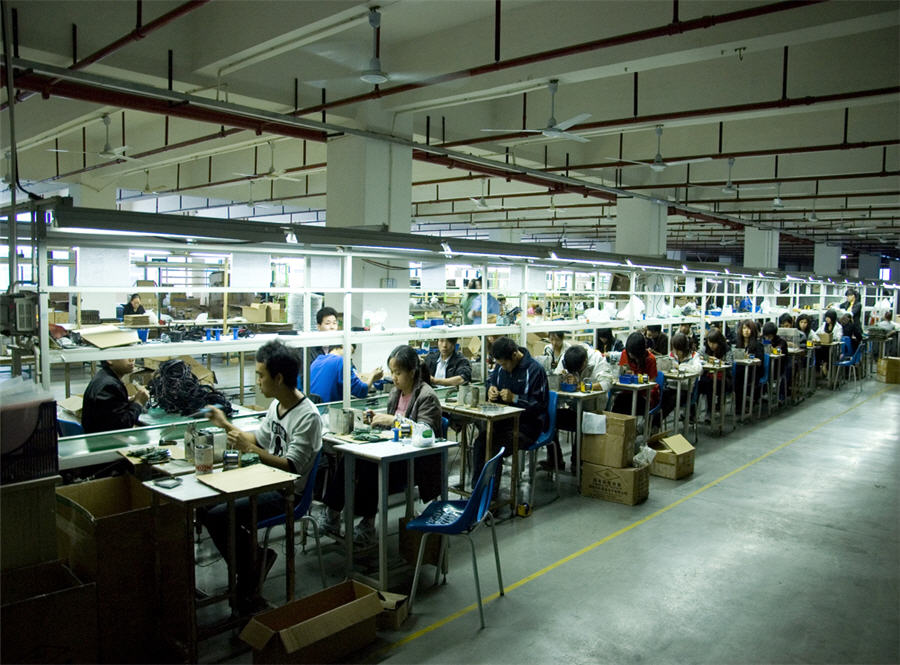
Mining and metals investors were rushing for the exits on Tuesday on fears that the China-inspired rally on commodity markets in 2016 was losing steam.
The sell-off led by comeback story Anglo-American, and punters’ favourites Freeport-McMoran and Teck Resources, came after a gauge of manufacturing activity in China unexpectedly fell back in April.
After recovering sharply to a more-than-a-year high in March, the Caixin-Markit PMI manufacturing index dropped to 49.4 last month. A reading below 50 indicates worsening operating conditions and measures including new orders, production rates and employment have now deteriorated for 14 months straight.
“The fluctuations indicate the economy lacks a solid foundation for recovery and is still in the process of bottoming out”
“All of the index’s categories indicated conditions worsened month-on-month, with output slipping back below the 50-point neutral level,” said He Fan, chief economist at Caixin Insight Group:
“The fluctuations indicate the economy lacks a solid foundation for recovery and is still in the process of bottoming out. The government needs to keep a close watch on the risk of a further economic downturn.”
On the Comex market in New York copper for delivery in July reacted negatively falling as much 2.4% to $2.21 a pound or some $4,875 a tonne. Tuesday’s decline pared year to date gains to 3.8% following last year 26% drop.
Iron ore continued its wild ride with the benchmark price exchanging hands for $62.50 a tonne, down more than 4% on the day. Iron ore is still up over 45% so far this year, although 2016’s rally may have little to do with industry fundamentals.
The drop in US benchmark oil price added to the negative mood in the sector after crude gave up more than 3% to $43.32 a barrel. Year to date gains for crude is a robust 16%, but like the rally in iron ore there are enough analysts skeptical that the rise could be sustained.
There were broad declines among the sector heavyweights with nervous investors taking profits in mining heavyweights that have enjoyed huge run-ups since January.
Anglo was the biggest loser on Tuesday giving up 13.7%, as investors take profits in the stock still up 122% since January
Top copper producer Freeport-McMoRan (NYSE:FCX) plunged 10.6% with a 48 million shares having changed hands in early afternoon trade. The Phoenix-based company is now worth $14.7 billion on the NYSE, and despite Tuesday’s retreat is up 79% in 2016.
Teck Resources (NYSE:TCK) down 7% for a $6.4 billion valuation was ripe for a correction following a three-fold increase since the start of the year. The Vancouver-based company is Canada’s largest coal, copper and zinc producer and has invested heavily in the oil sands.
Anglo American (LON:AAL, OTCMKTS:NGLOY) was the biggest loser on Tuesday giving up 13.7% in New York, as investors take profits in the stock which is still up 122% since January. Anglo, the world’s fifth largest publicly held mining company in terms of output, is in the middle of a radical restructuring and downsizing process which would leave the London-listed company a shadow of its former self.
The Melbourne-HQed company’s gains for the year is modest, but the stock never quite plumbed the same depths as its peers in recent months
Glencore (LON:GLEN) was also being punished, losing 8.3% in in New York following more modest losses in London trading. The Swiss mining and trading giant which like many in the sector is putting assets up for sale is worth 65% more in 2016 after falling to record lows last year.
Shares in world number one BHP Billiton (NYSE:BHP) also retreated in New York, losing 5.5% and paring year-to-date gains to 14.8%. The $75 billion Melbourne-based company which relies on oil and iron ore for the bulk of its earnings hit near decade lows last year following a deadly dam burst at an iron ore mine in Brazil it jointly owns with Vale.
Shares in Vale (NYSE:VALE.P), the world’s top iron ore producer, fell 7.2% in New York. The Rio de Janeiro-based company which also holds the top spot for nickel production can still boast a 61% advance since January for a market value of $24.8 billion.
The world’s second largest miner based on revenue Rio Tinto (NYSE:RIO) declined 6.3% in New York affording it a market cap of $56.8 billion. The Melbourne-HQed company’s gains for the year is a modest 7.8%, but the stock never quite plumbed the same depths as its peers at the end of 2015.
BHP Market Cap data by YCharts